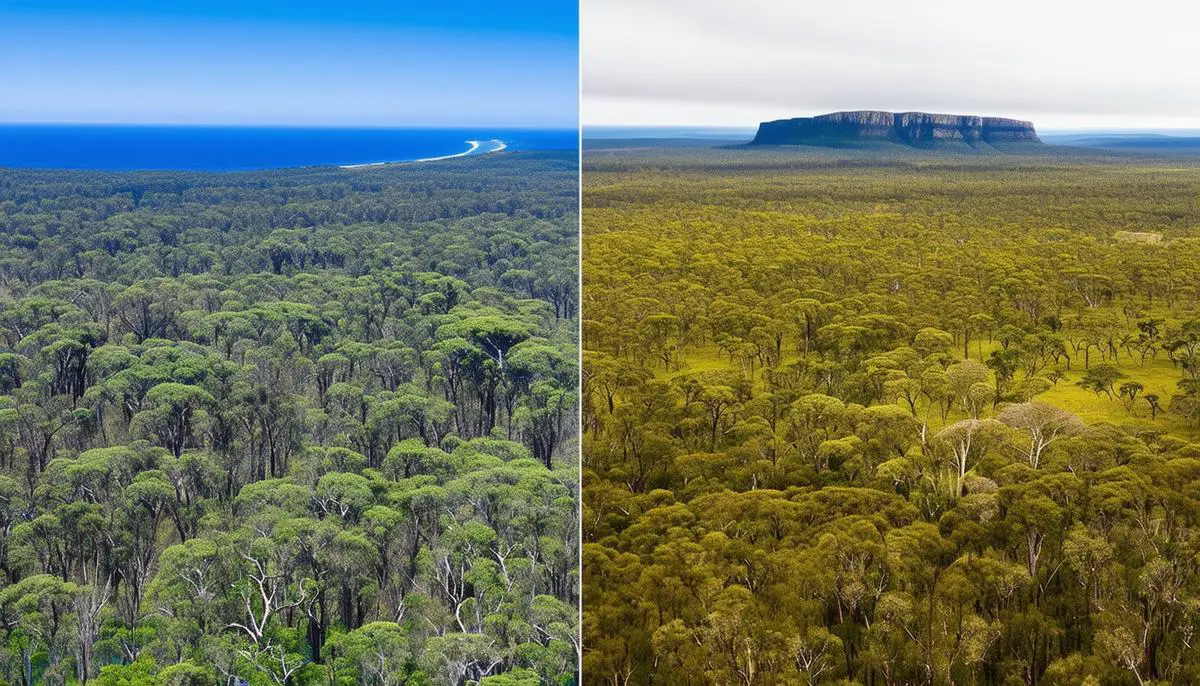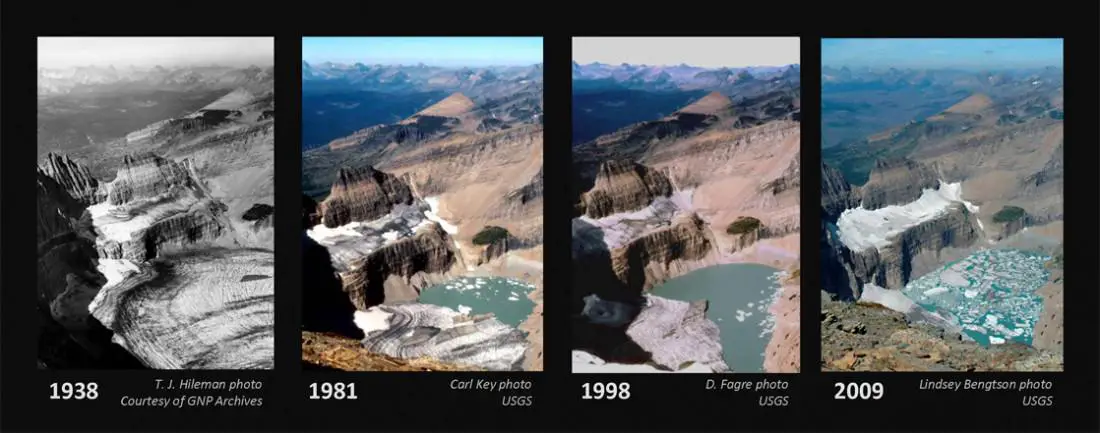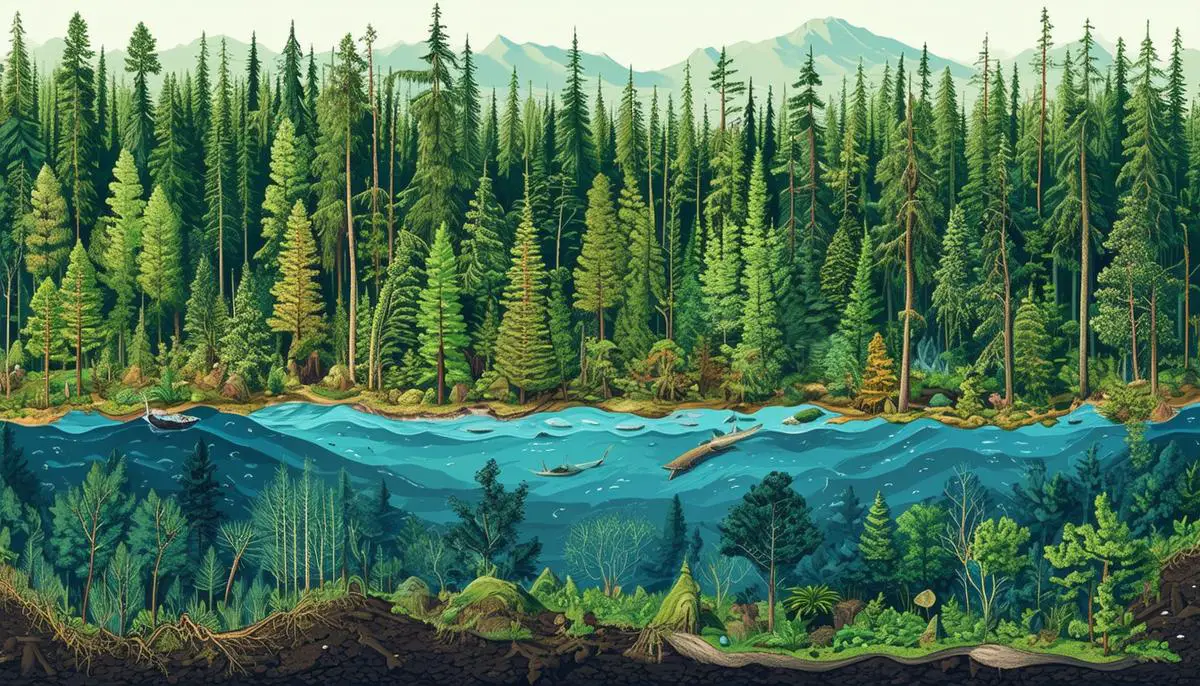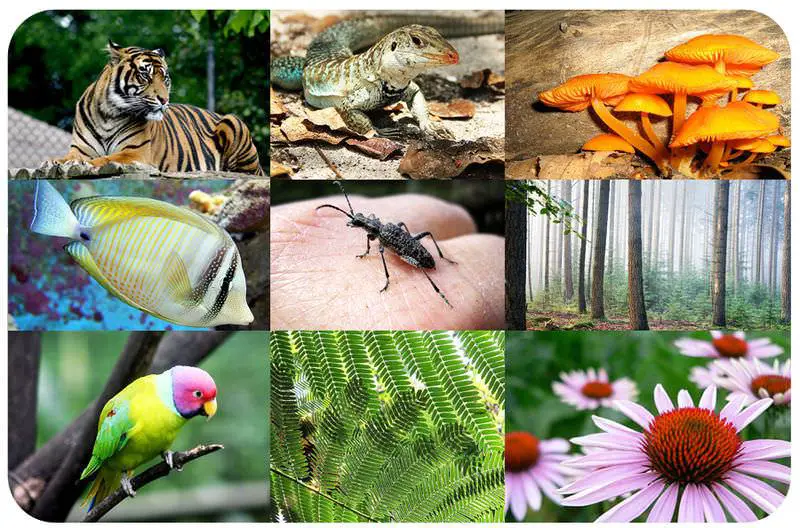Biodiversity, the variety of life forms on Earth, plays a crucial role in maintaining the balance of our ecosystems. From genetic variation within species to the diversity of entire ecosystems, each aspect contributes to the overall health and functionality of our planet. As we face the challenges posed by climate change, understanding and preserving biodiversity becomes increasingly important.
Understanding Biodiversity
Biodiversity refers to the variety of life forms on Earth, spanning genetic variation within species, differences between species, and the variety of ecosystems they form. This diversity is the foundation for ecosystem services that sustain life on Earth, ensuring fertile soil, water purification, and pollination, which are critical for food security and clean water supplies.
Australia exemplifies unique biodiversity, boasting over one million species of plants and animals, with 82% of its mammals and 93% of its frogs being endemic.1 This unique biodiversity supports ecosystems that provide clean air, water, and other natural resources, while also benefiting mental and physical health.
However, climate change poses significant challenges to biodiversity. Rising temperatures, shifting rainfall patterns, and extreme weather events are altering ecosystems, putting additional stress on vulnerable species. Reports indicate pronounced browning in vegetated areas globally, affecting plant growth rates due to changing water vapor levels since the 1990s. Coral reefs, known as the "rainforests of the sea", are particularly vulnerable to temperature changes and ocean acidification.
In New South Wales (NSW), around 1,000 plant and animal species are at risk of extinction. Programs such as Australia's Strategy for Nature 2019–2030 and the Saving our Species initiative are examples of efforts to manage and preserve biodiversity.
Ecosystem Functions Provided by Biodiversity:
- Holding soils together
- Cycling nutrients
- Protecting against pests and diseases
These functions are crucial in maintaining agricultural productivity and ensuring sustainable food systems. Nature-based solutions, such as conserving forests and restoring wetlands, can sequester carbon dioxide, acting as natural carbon sinks.
Understanding the importance of biodiversity is critical in tackling climate change. Protecting and restoring these natural systems is not just a conservation effort—it's a vital part of maintaining a livable planet. How can we balance human needs with the preservation of these crucial ecosystems?

Impacts of Climate Change on Biodiversity
Climate change poses a severe threat to biodiversity, with rising temperatures, erratic rainfall patterns, ocean acidification, and extreme weather events profoundly altering habitats. This multi-faceted crisis affects species' ability to survive and thrive, often resulting in migration, adaptation, or extinction.
The 2019-2020 Australian bushfires exemplify how climate change exacerbates threats to biodiversity. These fires, fueled by prolonged drought and record-breaking heat, ravaged an estimated 97,000 square kilometers of forest and surrounding habitats, increasing the number of threatened species in the affected areas by 14%.2 Iconic species like the koala suffered considerable losses, making recovery efforts even more critical.
Rising temperatures force species to migrate to cooler areas, often at higher altitudes or latitudes. This movement creates new challenges, such as competition for resources in the new habitats and the potential for invasive species to thrive. Changing rainfall patterns in regions like tropical rainforests lead to soil erosion, landslides, and reduced water quality, stressing local flora and fauna and diminishing the ecosystem's capacity to provide essential services.
Ocean acidification presents another grave concern, particularly for marine biodiversity. As atmospheric carbon dioxide levels rise, more CO2 is absorbed by the oceans, making it difficult for marine organisms to form calcium carbonate structures. Coral reefs face the threat of "bleaching," jeopardizing the myriad species that depend on these ecosystems for shelter and food.
"Climate change forces species to adapt quickly, often faster than their natural evolutionary processes allow."
Some may develop shorter life cycles or alter their phenological events, such as flowering or breeding seasons. However, not all species can adapt at the pace required. Plants, with their limited mobility, are particularly vulnerable.
In regions like the Arctic, melting ice caps and thawing permafrost result in habitat loss for species such as polar bears and seals, forcing them into areas with less food and more human interaction, increasing their risk of extinction. This affects the species directly and disturbs the entire ecosystem, which relies on the presence of these apex predators to maintain balance.
The compounded effects of climate change on biodiversity underline the urgency for comprehensive climate action and conservation efforts. Effective strategies must integrate protecting existing natural habitats, restoring degraded ecosystems, and creating corridors to facilitate species movement. How can we balance immediate conservation needs with long-term ecosystem resilience in the face of climate change?

Interconnectedness of Climate Change and Biodiversity Loss
The interplay between climate change and biodiversity loss is a complex, self-reinforcing cycle that demands immediate attention. As biodiversity dwindles, the Earth's ability to act as a natural sink for carbon dioxide diminishes, thereby accelerating climate change.
Earth's Critical Carbon Sinks:
- Forests
- Peatlands
- Oceans
Forests absorb vast amounts of CO2, but deforestation drastically reduces this capacity. Peatlands, though covering just 3% of the world's land area, store twice as much carbon as all the forests combined.3 When drained for agriculture or other uses, the stored carbon is released as CO2. Oceans and marine ecosystems like seagrasses, mangroves, and coral reefs sequester carbon at high rates but are under siege from rising temperatures and acidification.
Thriving ecosystems can have a profoundly positive impact on climate stabilization. Healthy forests support diverse flora and fauna, contributing to nutrient cycling and soil fertility. Coastal ecosystems protect shorelines from storm surges and help moderate temperatures. Biodiversity-rich ecosystems are more resilient to environmental changes and can better withstand and recover from climate-induced stresses.
However, the loss of biodiversity disrupts these functions. As species disappear, the intricate web of interactions within ecosystems begins to unravel, leading to a decline in the ecosystem's health and its capacity to provide services. For example, the loss of pollinators affects plants and the animals, including humans, that depend on those plants for food.
Conservation efforts must go beyond protecting individual species to preserving entire ecosystems. Restoration projects, such as reforestation and wetland rehabilitation, have dual benefits: sequestering carbon and enhancing biodiversity. Initiatives like rewilding can simultaneously tackle the climate and biodiversity crises by allowing landscapes to regenerate naturally.
Nature-based solutions provide a pathway to mitigate climate impacts while boosting biodiversity. Creating green urban spaces sequesters carbon, alleviates urban heat islands, improves air quality, and provides habitats for urban wildlife. Agroforestry practices that integrate trees into agricultural landscapes can enhance soil health, increase crop yields, and sequester carbon.
Addressing the dual crises of climate change and biodiversity loss requires a systemic approach that integrates policy, science, and community action. Governments, global organizations, and local communities must collaborate to protect and restore natural ecosystems, promote sustainable land-use practices, and reduce carbon emissions. How can we foster greater collaboration between different stakeholders to address these interconnected challenges?
The intertwined nature of climate change and biodiversity loss underscores the urgency for holistic solutions. By understanding and addressing the feedback loop between these two crises, we can create strategies that foster resilience and sustainability for the planet and future generations.

Strategies for Mitigating Climate Change and Preserving Biodiversity
Achieving a balance between mitigating climate change and preserving biodiversity requires various strategies that harness the power of natural ecosystems, promote sustainable land-use practices, and foster community engagement. Nature-based solutions offer a promising avenue for addressing both challenges simultaneously.
Reforestation effectively sequesters carbon and plays a crucial role in restoring habitats and preserving biodiversity. Planting a mix of native tree species rather than monocultures provides diverse habitats for wildlife and ensures long-term resilience against pests and diseases.
Protecting peatlands is paramount. These wetlands efficiently store carbon and are fragile ecosystems rich in biodiversity. When peatlands are drained for agricultural use, the stored carbon is released, exacerbating climate change. Keeping these areas wet preserves their carbon sequestration capability and supports unique plant and animal species adapted to these waterlogged conditions.
Marine ecosystems are another critical component in combating climate change. Seagrasses, mangroves, and coral reefs sequester carbon at rates far exceeding that of terrestrial forests. Protecting and restoring these habitats helps safeguard biodiversity while acting as a buffer against coastal erosion and extreme weather events.
Habitat connectivity is essential. Fragmented habitats can isolate populations, making species more vulnerable to extinction. Connecting these fragments through ecological corridors allows wildlife to migrate, find food, and reproduce more effectively. This is crucial for species whose habitats are shifting due to climate change; they need these pathways to move to more suitable environments.
Climate-ready revegetation involves planting species resilient to expected climate conditions. This forward-thinking approach ensures that as conditions change, ecosystems will have plant species that can withstand those changes, maintaining overall ecosystem health and function. This strategy often requires extensive research to anticipate future climate scenarios and select appropriate species.
Community involvement in conservation efforts is crucial. Local communities often have profound connections to their natural environments and can be powerful stewards of biodiversity. Engaging communities in conservation through education, participatory projects, and financial incentives encourages sustainable practices and fosters a culture of environmental stewardship. Programs that involve indigenous knowledge and local expertise can be particularly effective, as these typically leverage centuries-old practices well-suited to the local environment.
Successful policies and programs provide blueprints for scaling these efforts globally. Examples include:
- Australia's Strategy for Nature 2019–2030: Outlines clear goals and actions for conserving biodiversity and mitigating climate change.
- European Union's Green Deal: Includes ambitious targets for reforestation, biodiversity conservation, and the establishment of protected areas.
Governments, organizations, and individuals must collaborate, integrating policy, science, and local action to achieve significant progress. This comprehensive approach ensures that the strategies implemented are effective in the short term and sustainable for future generations. Lessons from successful programs should be adapted and replicated to suit different ecological and socio-economic contexts.
"How can we ensure that these strategies are implemented effectively across diverse regions? What role can individuals play in supporting these conservation efforts?"

Challenges and Trade-offs in Climate Mitigation and Biodiversity Conservation
Balancing climate mitigation and biodiversity conservation presents complex challenges and trade-offs. One notable tension arises from large-scale land-use changes introduced to sequester carbon, such as Bioenergy with Carbon Capture and Storage (BECCS) and afforestation. While these strategies are important for meeting global climate goals, they can inadvertently harm regional biodiversity and disrupt local ecosystems.
BECCS and Its Impacts
BECCS involves cultivating bioenergy crops that are later used to produce energy, with the CO2 generated from burning these crops captured and stored underground. This process captures carbon and promises a net reduction in greenhouse gases. However, large-scale deployment of BECCS can lead to the extensive conversion of natural landscapes into bioenergy croplands, often at the expense of existing forests, grasslands, and other habitats, causing significant biodiversity loss.
Afforestation: A Double-Edged Sword
Afforestation, the process of planting trees to create forests on lands that were not previously forested, also presents trade-offs. While it can enhance carbon sequestration, it can threaten biodiversity if implemented inappropriately. Planting trees in naturally treeless areas, such as grasslands or savannas, can alter the native ecosystem irreversibly, reducing habitats for species adapted to open landscapes.
Striking a balance requires equitable and sustainable strategies that consider both the global need to mitigate climate change and the local need to protect biological diversity. One approach is integrating biodiversity considerations into climate mitigation policies. For example:
- Selecting bioenergy crops that support local wildlife and biodiversity to minimize the negative impacts of BECCS
- Prioritizing native tree species in afforestation efforts and avoiding disruption of already biodiverse habitats
Equity is another critical component. The burdens and benefits of climate mitigation efforts must be distributed fairly among regions and communities. Many biodiversity-rich regions, such as tropical rainforests and savannas, are also areas where large-scale afforestation and BECCS projects are proposed. However, these regions often have local communities that rely heavily on their natural environments for livelihoods and cultural practices. Implementing climate mitigation strategies in these areas without considering the socio-economic impacts can exacerbate inequalities and lead to resistance from local populations.
A landscape-level approach that considers the interconnectedness of ecosystems and human activities is vital. This involves creating ecological networks that include protected areas and corridors to facilitate species movement and resilience. Such an approach can help mitigate the trade-offs of land-use changes by maintaining habitat connectivity and ecosystem functionality.
Collaborative efforts between scientists, policymakers, and local communities are necessary to devise and implement solutions that are both ecologically and socially sustainable. Science-based tools and models can help predict the impacts of various mitigation strategies on biodiversity and identify potential conflicts. Engaging local communities in decision-making processes ensures that their knowledge and needs are integrated into conservation and mitigation plans, fostering a sense of ownership and stewardship.
Continuous monitoring and adaptive management are crucial. As climate change progresses, the conditions and challenges will evolve, requiring flexibility and responsiveness in strategies. Adaptive management allows for adjustments based on new scientific data and on-the-ground realities, ensuring the long-term success of both climate mitigation and biodiversity conservation efforts.
"How can we better integrate local and indigenous knowledge into these strategies? What role should international cooperation play in addressing these global challenges?"
![]()